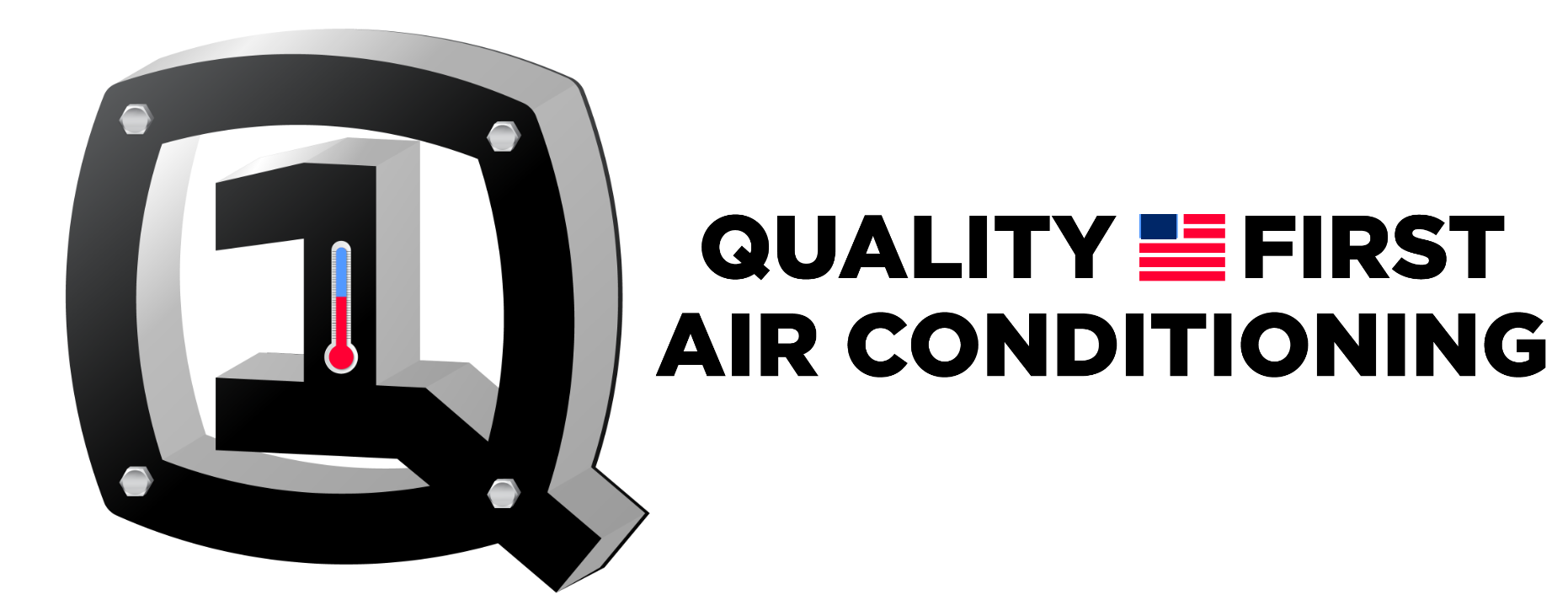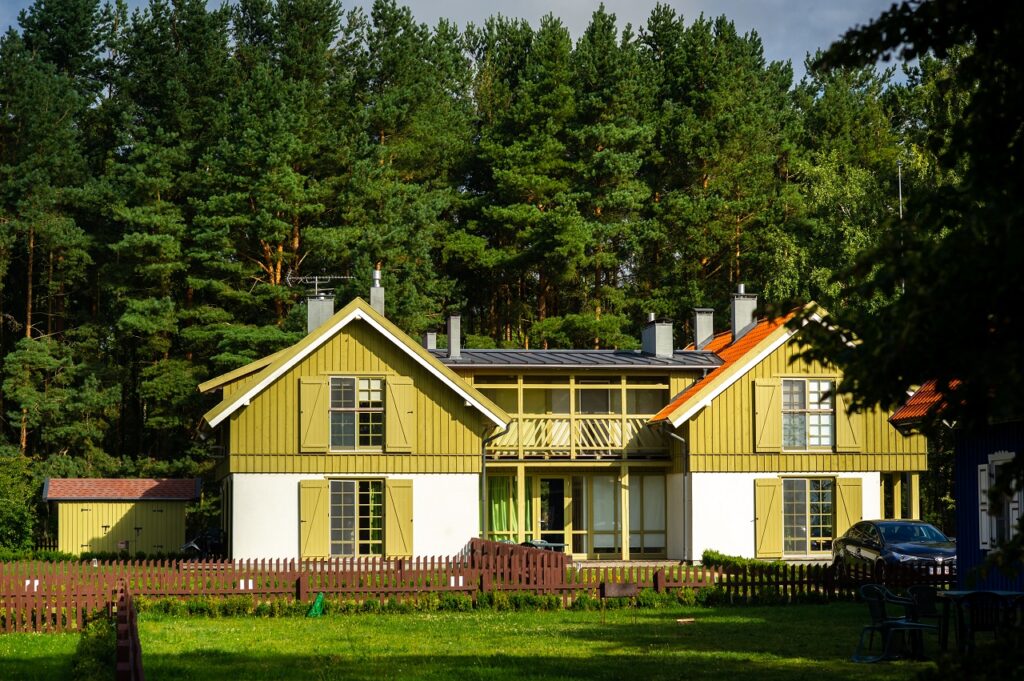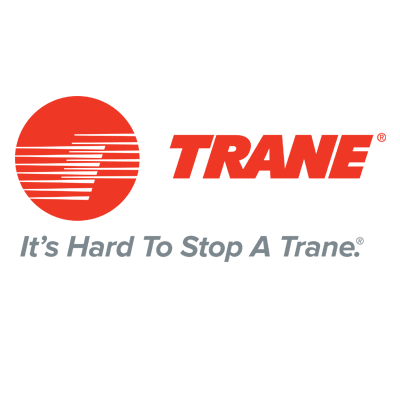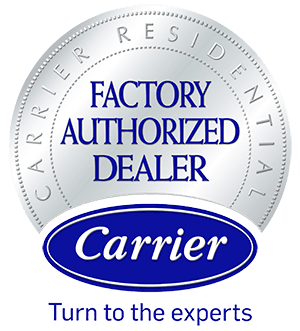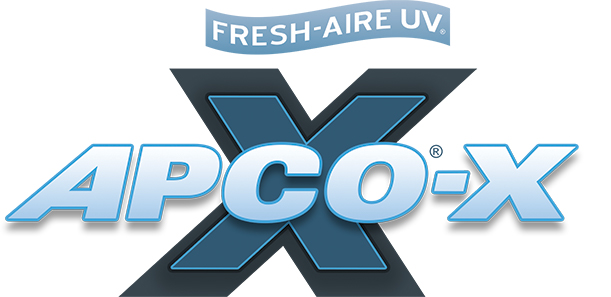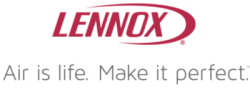Air conditioning is a game-changer for comfort during hot days. It keeps your space cool and refreshing, making unbearable heat a thing of the past with modern air conditioners. Understanding how air conditioning works can save you money and improve your indoor air quality. Whether you’re looking to buy, maintain, or upgrade your system, knowing the ins and outs is crucial. This guide covers essential tips, top brands, and energy-efficient options that will help you make the best choice for your needs. Get ready to discover our top picks that will keep you chill all summer long. Scroll down for reviews that’ll guide you in making the perfect decision for your air conditioning needs!
Key Takeaways
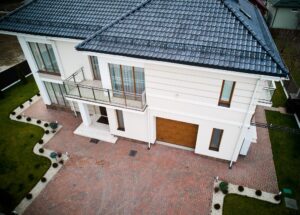
-
Adjust your ceiling fan direction to counterclockwise in summer to help cool your space effectively.
-
Set your programmable thermostat to higher temperatures when you’re away to save energy and costs.
-
Aim for an optimal temperature setting of around 75°F for comfort while minimizing energy use.
-
Consider upgrading to a smart thermostat for more precise control and energy savings based on your habits.
-
Seal any gaps in windows and doors to prevent cool air from escaping and keep your home comfortable.
-
Use curtains or blinds to block out direct sunlight, which can help maintain a cooler indoor temperature.
1. Ceiling fan direction
Ceiling fans play a crucial role in maintaining comfort during hot weather. Set ceiling fans to rotate counterclockwise in summer. This rotation creates a cooling breeze that mimics the effect of air conditioning. The airflow generated helps lower perceived temperatures, making rooms feel cooler.
Adjusting the fan speed is important. A moderate speed enhances airflow without overwhelming the room. This balance allows for effective cooling while conserving energy. For optimal results, combine ceiling fans with your AC unit. This combination improves overall comfort and efficiency, reducing energy costs.
During the day, use ceiling fans to circulate air consistently. This circulation can help maintain a stable temperature throughout your home. Studies show that using ceiling fans alongside air conditioning can allow you to raise your thermostat setting by about 4 degrees Fahrenheit without sacrificing comfort.
In winter, reverse the fan direction to clockwise. This helps push warm air down from the ceiling, improving heating efficiency.
Key benefits of using ceiling fans include:
-
Cost savings: Reduces reliance on air conditioning.
-
Versatility: Use year-round for both cooling and heating.
-
Enhanced airflow: Improves indoor air quality.
Understanding how to utilize ceiling fans effectively can transform your indoor climate control strategy. Simple adjustments lead to significant improvements in comfort and energy efficiency.
2. Programmable thermostat settings
Programmable thermostat settings allow users to control their home’s temperature automatically. These HVAC thermostats can adjust temperatures based on your daily schedule.
Users can set specific times for heating or cooling, ensuring comfort when at home while saving energy when away. For instance, if you leave for work at 8 AM and return at 6 PM, you can program the thermostat to lower the temperature during the day and raise it just before you arrive home. This feature can lead to significant energy savings.
Utilizing pre-set schedules optimizes efficiency. According to the U.S. Department of Energy, adjusting your thermostat by just 7-10 degrees for eight hours a day can save about 10% on heating and cooling costs annually. This means that with smart programming, households can reduce their energy bills significantly.
Experimenting with different settings helps find the most comfortable and efficient temperature profile for your home. Many programmable thermostats come with user-friendly interfaces, enabling easy adjustments. Some models even offer smartphone connectivity, allowing remote access to your HVAC systems from anywhere.
Incorporating a programmable thermostat is an effective way to enhance your home’s energy efficiency while maintaining comfort. By leveraging technology, homeowners can enjoy both convenience and savings.
3. Optimal temperature settings
Maintaining 78°F serves as an ideal setting for most homes. This temperature balances comfort and energy efficiency. It allows for moderate cooling needs without overloading your air conditioning system.
When leaving the house, increase the thermostat by a few degrees. This simple adjustment can significantly lower energy costs. According to the U.S. Department of Energy, raising the temperature by just 7-10°F for eight hours a day can save up to 10% on cooling bills.
Avoid drastic temperature changes. Rapid shifts in temperature can put unnecessary strain on your AC unit. Such stress may lead to increased wear and tear, reducing the lifespan of the system. Keeping a consistent temperature helps maintain the efficiency of your air conditioning system.
Consider programmable thermostats for convenience. These devices allow you to set different temperatures based on your schedule. For example, you can program the thermostat to cool your home before you return from work while saving energy during your absence.
In summary, keeping your home at 78°F when present and adjusting it slightly higher when away promotes both comfort and efficiency. This approach not only meets your cooling needs but also prolongs the life of your heating and cooling systems while saving money on energy costs.
4. Consider a smart thermostat
Smart thermostats offer advanced features that enhance home comfort and energy efficiency. These devices allow users to control their home’s temperature remotely through smartphone apps. This capability enables adjustments from anywhere, ensuring optimal conditions even when away.
Monitoring energy usage becomes easier with smart thermostats. Users can track their consumption patterns over time. This information helps identify trends and adjust settings for maximum efficiency. For example, knowing when energy costs peak allows homeowners to take advantage of energy-saving modes, significantly reducing electricity bills.
A key metric to consider is the seasonal energy efficiency ratio (SEER). Smart thermostats help maintain a higher SEER rating by optimizing heating and cooling cycles, which can lead to substantial savings on energy costs.
Implementing a smart thermostat requires only a simple step: installation. Most models are designed for easy setup, often without professional assistance. Some units even learn user preferences over time, adjusting automatically for comfort and efficiency.
Incorporating a smart thermostat into your home not only enhances convenience but also promotes sustainable energy use. These devices are an investment in both comfort and cost savings, making them an essential addition for modern households.
5. Seal windows and doors
Sealing windows and doors is crucial for maintaining a comfortable indoor environment. Gaps or cracks can lead to significant energy loss, making your air conditioning system work harder. This not only increases energy bills but also reduces the overall efficiency of your cooling system.
Using materials like weather stripping or caulking can greatly improve insulation around these openings. Weather stripping is ideal for movable parts like doors, while caulking works best for fixed areas like window frames. Both methods help create a tighter seal, preventing cool air from escaping.
Regular inspections are essential. Over time, seals may wear out or become less effective due to weather conditions. Checking these seals at least once a year can ensure they function properly. If you notice any cracks or gaps, address them immediately to maintain optimal temperature control.
Statistics show that sealing gaps and improving insulation can reduce energy costs by up to 20%. This can lead to substantial savings over time, especially in regions with extreme temperatures.
Consider the comfort of your home. Properly sealed windows and doors enhance indoor air quality by reducing humidity levels and preventing drafts. This creates a more pleasant living environment while also protecting your air conditioning unit from excessive strain.
6. Use curtains or blinds
Curtains and blinds play a vital role in maintaining a comfortable room temperature. Closing curtains or blinds during the hottest parts of the day effectively blocks direct sunlight. This simple action can significantly reduce indoor heat, keeping your space cooler.
Opting for light-colored or reflective window treatments minimizes heat absorption. Light colors reflect sunlight, while darker colors tend to absorb it. For those seeking maximum heat reduction, consider using blackout curtains. These specially designed curtains not only block out light but also provide excellent insulation against external temperatures.
Here are some key benefits of using curtains and blinds:
-
Heat Reduction: Keeping curtains closed can lower indoor temperatures by up to 20 degrees Fahrenheit.
-
Energy Savings: Reducing reliance on air conditioning can save money on energy bills.
-
Comfort Improvement: A cooler room enhances overall comfort, especially during hot summer months.
Using lamps wisely is another tip. Avoid placing lamps near windows where they can add extra heat to the room. Instead, use them strategically in areas that do not receive direct sunlight.
Incorporating these tips helps tackle common problems associated with excessive heat indoors. By blocking harmful rays from the sun, you create a more pleasant living environment while saving money on cooling costs.
7. Keep vents unblocked
Air conditioning systems rely on optimal airflow to function effectively. Keeping vents unblocked is essential for maintaining comfort and efficiency in your home.
Furniture and other objects can obstruct air vents, leading to uneven cooling. This blockage forces your HVAC system to work harder, increasing energy consumption. Regularly check your vents to ensure they are clear of debris. Dust buildup can hinder performance and lead to the need for more frequent maintenance.
Cleaning is crucial. Dirty air filters can restrict airflow, causing strain on the system. Replace or clean filters regularly to keep the air flowing freely. This simple task can save you money on energy bills and extend the life of your AC unit.
Arrange furniture thoughtfully to promote even air distribution throughout the room. Avoid placing large items directly in front of vents. Instead, create pathways for airflow that allow cool air to circulate effectively.
Look out for gaps or leaks around ductwork. These can significantly impact airflow and efficiency. Sealing these leaks ensures that conditioned air reaches its intended destination without escaping.
8. Utilize fans strategically
Positioning portable fans in rooms where you spend the most time can significantly enhance comfort. These fans circulate air effectively, making the environment feel cooler without overworking your air conditioning system.
Exhaust fans play a crucial role in kitchens and bathrooms. They help remove excess heat and humidity, especially after cooking or showering. This action prevents your home from becoming too warm, allowing your AC to work more efficiently.
Combining fans with your AC system can lead to substantial energy savings. When used together, they create a more comfortable environment while reducing the need for your air conditioning unit to run constantly. For instance, running a ceiling fan alongside your AC can allow you to raise the thermostat by several degrees without sacrificing comfort.
Statistics show that using fans can reduce energy consumption by up to 30%. This means lower utility bills and a smaller carbon footprint.
Professional advice suggests that using fans can improve the overall performance of your cooling system. By circulating cool air, fans help maintain even temperatures throughout your home.
In summary, utilizing fans strategically enhances efficiency and comfort in your home while supporting your air conditioning system’s performance.
9. Create cross ventilation
Creating cross ventilation improves air quality and reduces the need for air conditioning. Open windows on opposite sides of your house. This setup allows cool air to flow in while warm air escapes.
Use strategically placed fans to enhance this natural airflow. Positioning fans near open windows can push fresh air into your home. Fans help circulate cool air, making your living space more comfortable.
Take advantage of cooler evening air. As temperatures drop, open windows to let in this refreshing breeze. This simple act can significantly decrease indoor temperatures without relying on HVAC systems.
Statistics show that effective ventilation can lower indoor temperatures by up to 10 degrees Fahrenheit. This not only saves energy but also promotes a healthier environment. Improved airflow reduces humidity levels, preventing mold growth and improving overall indoor air quality.
Consider a HVAC project that incorporates natural ventilation strategies. Integrating these methods with existing cooling systems can lead to better efficiency. A well-ventilated home requires less energy for cooling, which is beneficial for both the environment and your wallet.
Incorporating these techniques into your home can transform how you manage heat and comfort during warmer months. By embracing cross ventilation, you create a more sustainable and pleasant living space while reducing reliance on mechanical cooling solutions.
10. Regular AC maintenance
Regular AC maintenance is essential for successful air conditioner performance. Scheduling annual professional inspections helps ensure your air conditioning system functions efficiently. Technicians can identify potential issues early, saving you from costly repairs later.
Clean or replace air filters monthly. This task is crucial for maintaining optimal airflow and efficiency. Clogged filters restrict airflow, making your air conditioning unit work harder and consume more energy. According to the U.S. Department of Energy, replacing a dirty filter can lower your energy consumption by 5% to 15%.
Address minor repairs promptly. Ignoring small issues can lead to significant breakdowns that require expensive repairs or even complete system replacement. For example, a worn-out fan belt may cause your AC unit to overheat, leading to compressor failure.
Here are some key air conditioner maintenance tasks:
-
Schedule annual inspections.
-
Clean or replace filters monthly.
-
Check refrigerant levels regularly.
-
Inspect ductwork for leaks.
-
Ensure proper drainage of condensate lines.
Implementing these efficient air conditioning tips enhances the longevity of your unit and improves indoor air quality. Regular maintenance not only keeps your home comfortable but also reduces energy costs.
Investing time in preventative HVAC maintenance pays off in the long run. A well-maintained air conditioning system operates more efficiently, providing better cooling while using less energy.
Closing Thoughts
You’ve got the tools to keep your air conditioning running efficiently. From adjusting ceiling fan direction to sealing windows, each tip plays a part in creating a comfortable environment. Regular maintenance is key, ensuring your system works at its best. Smart thermostats and strategic ventilation can also make a huge difference.
Don’t wait for the heat to hit before you act. Implement these strategies today and enjoy lower energy bills and a cooler home. Take charge of your comfort and efficiency now!
Frequently Asked Questions
What direction should my ceiling fan spin in summer?
In summer, your ceiling fan should spin counterclockwise. This creates a cooling breeze, making the room feel cooler without lowering the temperature.
How can I set my programmable thermostat for efficiency?
Set your programmable thermostat to adjust temperatures according to your schedule. Aim for higher settings when you’re away and lower settings when you’re home for optimal energy savings.
What is the ideal temperature setting for air conditioning?
The ideal temperature for air conditioning is typically around 75°F (24°C) when you’re home. This balance keeps you comfortable while saving energy.
Why should I consider a smart thermostat?
A smart thermostat learns your habits and adjusts temperatures automatically, leading to energy savings and increased convenience. It can also be controlled remotely via smartphone.
How do I seal windows and doors effectively?
Use weatherstripping or caulk to seal gaps around windows and doors. This prevents cool air from escaping, enhancing your AC’s efficiency and reducing energy costs.
Should I keep vents blocked or unblocked?
Always keep vents unblocked to ensure proper airflow. Blocked vents can strain your AC system, leading to inefficiency and potential breakdowns.
How can I create cross ventilation in my home?
Open windows on opposite sides of your home to allow fresh air to flow through. This natural ventilation reduces reliance on air conditioning and enhances comfort.
